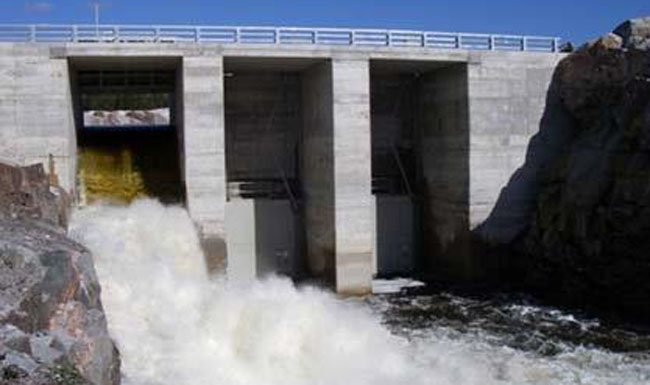Biigtigong Nishnaabeg has long history of developing hydro dams

By Joey Krackle
In 2015, citizens of Ojibways of Pic River were consulted and were determined to change their community name to Biigtigong Nishnaabeg by way of a Chief and Council resolution. Recently the Biigtigong Nishnaabeg community ratified their constitution which emphasizes their right to self-determination and their right to determine the use of their traditional territory which encompasses over two million hectares combined with Exclusive and shared territory along the north shore of Lake Superior and includes Pukaskwa National Park.
This First Nation is recognized as a national leader in renewable green energy development while using sound management practices and innovative approaches. It has a long history of water power development in the local area and made Canadian history in 1996, when Biigtigong Nishnaabeg became the first, First Nation community in Canada to acquire ownership of a hydro dam.
This First Nation has population of 1200 citizens, with about 500 living on reserve. Its economy focuses on renewable energy, mining and forestry. Biigtigong Nishnaabeg’s mission is the promotion and development of a healthy, safe and self-sufficient community which will deliver fair and accountable services and programs that are reflective of its peoples’ needs, priorities and available resources.
Byron LeClair, Biigtigong Nishnaabeg’s director of energy project development pointed out that these energy projects were designed to respect Anishinabek environmental stewardship. He stated:
“I think our 25 years of experience – in terms of developing, owning and operating these types of facilities – shows that we’re capable of developing these projects with minimal impact on the environment.”
In 1987 this first nation community began developing the Wawatay generating station on Black River. This mini-hydro dam was commissioned in 1991 and has a capacity of 13.5 megawatts. The Twin Falls project on the Kagiano River began in 1992 and was commissioned in 2001. This project has a capacity of five megawatts.
The Umbatta Falls generating station project on the White River was commissioned in 2008 and has a capacity of 23 megawatts. These waterpower facilities bring numerous benefits to society and the local economy. Biigtigong Nishnaabeg will benefit from a reliable renewable energy supply, and the ability to offset the production of greenhouse gas emissions from fossil fuel plants. Their membership will also benefit directly in any revenue generated by the facility, after debt payments and operating and maintenance expenditures, as they are the majority shareholders of the Umbatta project.
Biigtigong Nishnaabeg’s projects are termed run of the river because the First Nation has attempted to strike an appropriate balance between the social and economic benefits and any resultant loss of recreational value, scenic quality and/or wilderness character of the site. These projects have increased the community’s self-reliance and allowed numerous community projects to go forward that would not have otherwise. These projects also provide a source of employment and pride to community members.
Biigtigong Nishnaabeg In July 2014 submitted a proposal to build a hydroelectric facility in Pukaskwa National Park. This project would be located at Chigamiwinigum Falls on White River. First Nation representatives met and are continuing to meet with Pukaskwa Park and Parks Canada officials to discuss this renewable green energy development proposal. The First Nation argues that as the proposal site is on its traditional territory, the community not Parks Canada has the right to determine the use of their land. Biigtigong Nishnaabeg emphasizes that Parks Canada has a hydro power division and there are precedents, such as Banff and Jasper for building renewable energy hydro projects in national parks.
Byron LeClair, director of energy project development for this community in a July 17, 2014 interview with CBC pointed out that the Pukaskwa facility would produce enough electricity for more than 12,000 homes per year. He emphasized that the proposed project when added to the current first nation capacity would push the community’s supply of electricity to about 33,000 homes. He estimated that the new project would cost in excess of $100 million and he looked forward to construction beginning in 2018 after regulatory requirements have been met.
Mr. LeClair, in this interview with CBC emphasized that the Chigamiwinigum Falls project would be a natural fit in the national park. He stated: “We have history in terms of being able to balance a commercial need to generate renewable energy against preserving park values, and …from our perspective we don’t see renewable energy and the national park mandate as being incompatible.”
The recently concluded COP21 United Nations Climate Change Conference in Paris reached the first universal climate deal that will see an accelerated phase-out of fossil fuels, the growth of renewable energy streams and powerful new carbon markets to enable countries to trade emissions and protect forests. The leadership shown by Biigtigong Nishnaabeg heralds an innovative path for renewable green energy development that many Canadian and international governments may wish to pursue.


